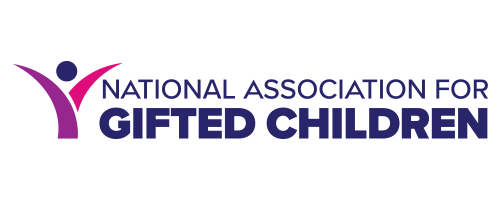Curriculum Compacting
Curriculum compacting is a technique for differentiating instruction that allows teachers to make adjustments to curriculum for students who have already mastered the material to be learned, replacing content students know with new content, enrichment options, or other activities. Researchers recommend that teachers first determine the expected goals of the unit or lesson in terms of the content, skills, or standards students must learn before assessing students to determine which ones have already mastered most or all of the specified learning outcomes. [1, 2]
-
Elementary teachers can eliminate from 24%-70% of high-ability students’ curriculum by compacting without any negative affect on test scores or performance. [3] Forty years of research supported that some students learn more quickly than others; in fact, in three weeks over the summer, 20% of gifted learners can master a year’s worth of schoolwork. [4, 5] Curriculum compacting can have a positive effect on students’ performance. Because many talented students receive little differentiation of instruction from their peers, they spend a great deal of time in school doing work that they have already mastered. Curriculum compacting allows these students to avoid having to relearn material they already know, which research has shown can lead to frustration, boredom and, ultimately, underachievement. [6, 7]
-
Researchers have reported that when classroom teachers eliminated between 40%-50% of the previously mastered regular curriculum for high-ability students, no differences were found between students whose work was compacted and students who did all of the work in reading, math computation, social studies, and spelling. [8] In an analysis of gifted education literature on the topic, another researcher found curriculum compacting to be very effective overall in mathematics, science, and foreign languages. [9]
-
In a national study of curriculum compacting, the students who received compacting in science and mathematics actually scored significantly higher on achievement posttests than their peers in the control group, suggesting the benefits of compacting for increases on standard achievement assessments. Analyses of data related to students’ thoughts about replacement activities indicated that the students viewed the new curricular options as much more challenging than standard material. [10] In a recent study of seventh-grade mathematics students, curriculum compacting was effective in developing students’ critical thinking skills, especially in basic geometry concepts. [11]
-
Some concerns have arisen regarding the need to train teachers in the compacting process. In one study focused on curriculum compacting, almost all classroom teachers participating learned to use compacting, but needed coaching and help to substitute appropriately challenging options. [12] Teachers may wish to work collaboratively with teachers across grade levels and the students themselves for planning purposes. [13] When interviewing teachers about the instructional methods used in fast-paced classes, other researchers found that few teachers mentioned curriculum compacting as a strategy used to eliminate instruction. [14] Teachers in a small study looking at compacting with first-grade students stated that they were “eager to continue implementing curriculum compacting in the future” because of the benefits toward students, but it was determined that further in-service and other training opportunities were needed to help them modify instruction and find replacement activities. [15] One curriculum compacting challenge mentioned difficultly understanding how to manage diverse groupings of students with various levels of mastery within the same classroom. [16]
[1, 6] Renzulli, J. S., & Reis, S. M. (2014). The schoolwide enrichment model: A how-to guide for talent development (3rd ed.). Prufrock Press.
[2, 13] Caram, C. A., & Davis, P. B. (2017). Curriculum compacting: How and why to differentiate beyond proficiency. In J. Danielian, C. M. Fugate & E. Fogarty (Eds.), Teaching Gifted Children (pp. 133–141). Taylor & Francis Group. https://doi.org/10.4324/9781003238638-26
[3, 8, 12] Reis, S. M., Westberg, K. L., Kulikowich, J. M., & Purcell, J. H. (1998). Curriculum compacting and achievement test scores: What does the research say? Gifted Child Quarterly, 42, 123–129. https://doi.org/10.1177/001698629804200206
[4, 5] VanTassel-Baska, J., & Baska, A. (2019). Curriculum planning & instructional design for gifted learners. Routledge.
[7] Ritchotte, J. (2017). Ungifting the gifted underachiever. In J. Danielian, C. M. Fugate, & E. Fogarty (Eds.), Teaching Gifted Children (pp. 351–358). Taylor & Francis Group. https://doi.org/10.4324/9781003238638-71
[9] Rogers, K. B. (2005, November). A content analysis of gifted education research and literature. Paper presented at the annual convention of the National Association for Gifted Children, Louisville, KY.
[10] Reis, S. M., Westberg, K. L., Kulikowich, J., Caillard, F., Hébert, T. P., Plucker, J. A., … Purcell, J. H., Rogers, J. B., & Smidst, J. M. (1993). Why not let high ability students start school in January? The curriculum compacting study (Research Monograph 93106). University of Connecticut, The National Research Center on the Gifted and Talented. https://nrcgt.uconn.edu/research-based_resources/reiswest/
[11] Dailo, A. E., & Dailo, R. R. (2022). Differentiated instruction in mathematics: Its effect on the level of critical thinking skills of grade 7 students. Asia Pacific Journal of Advanced Education and Technology, Special Issue, 413–425. https://doi.org/10.54476/apjaet/59497
[14] Lee, S. Y., & Olszewski-Kubilius, P. (2006). A study of instructional methods used in fast-paced classes. Gifted Child Quarterly, 50, 216–237. https://doi.org/10.1177/001698620605000303
[15] Stamps, L. S. (2004). The effectiveness of curriculum compacting in first grade classrooms. Roeper Review, 27, 31–42
[16] Livers, S. D., Paxton, M., O’Grady, N., & Tontillo, M. (2018). Elementary curriculum compacting: Teacher candidates supporting differentiated instruction in elementary mathematics. School-University Partnerships, 11(1), 19–25.


